Sun's Web
These are links to other great web sites about Sun. But beware: you don't want to get caught in Sun's Web! Don't stay away from Windows to the Universe for long!

 Here Comes the Sun! A self-guided tutorial about the Sun.
Here Comes the Sun! A self-guided tutorial about the Sun.
 Live from the Sun A great web site that takes you to the Sun and back!
Live from the Sun A great web site that takes you to the Sun and back!
 SOHO The SOHO Mission Home Page
SOHO The SOHO Mission Home Page
 Solar Flare TheoryA NASA/Goddard Space Flight Center site devoted to solar flares
Solar Flare TheoryA NASA/Goddard Space Flight Center site devoted to solar flares
 Stanford SOLAR Center This site is tons of fun! Includes an online solar telescope, the Sun song and a question and answer section.
Stanford SOLAR Center This site is tons of fun! Includes an online solar telescope, the Sun song and a question and answer section.
 The Sun: Man's Friend or Foe Learn the good and bad about the Sun.
The Sun: Man's Friend or Foe Learn the good and bad about the Sun.
 Sun-Earth On-line Resources Content, classroom activities, games, real-time data and more...
Sun-Earth On-line Resources Content, classroom activities, games, real-time data and more...
 The Virtual Sun Take a virtual tour of the Sun. Don't forget your sunglasses!
The Virtual Sun Take a virtual tour of the Sun. Don't forget your sunglasses!
 YOKHOH The YOKHOH mission home page.
YOKHOH The YOKHOH mission home page.
You might also be interested in:
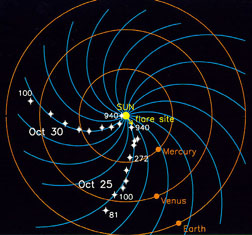
IMF stands for Interplanetary Magnetic Field. It is another name for the Sun's magnetic field. The Sun's magnetic field is enormous and is carried by the solar wind. The solar wind and magnetic field are
...more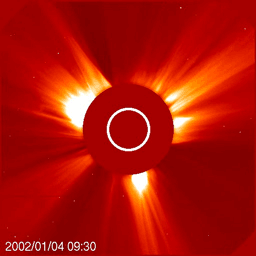
"Without warning, the relatively calm solar atmosphere can be torn asunder by sudden outbursts of a scale unknown on Earth. Catastrophic events of incredible energy...stretch up to halfway across the visible
...more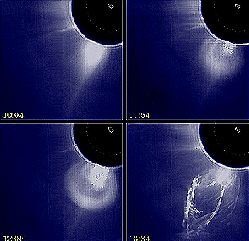
The Sun is not a quiet place, but one that exhibits sudden releases of energy. One of the most frequently observed events are solar flares: sudden, localized, transient increases in brightness that occur
...more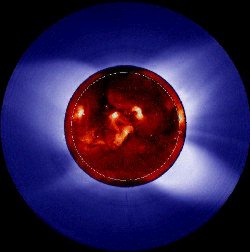
The visible solar atmosphere consists of three regions: the photosphere, the chromosphere, and the solar corona. Most of the visible (white) light comes from the photosphere, this is the part of the Sun
...more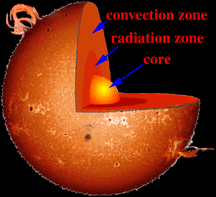
To understand how our Sun works, it helps to imagine that the interior of the Sun is made up of different layers, one inside the other. The innermost layer, the solar core, is the region where the energy
...more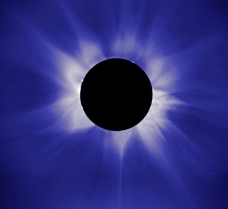
Scientists at the High Altitude Observatory (HAO) are working to understand the changes we see in the Sun over time, and how these changes affect the atmosphere of the Earth. There are four main areas
...more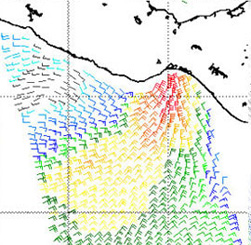
Energy from the Sun is one of the primary drivers of the Earth system. The Sun warms our planet, heating the atmosphere. This energy feeds atmospheric processes and is a primary driver of our weather.
...more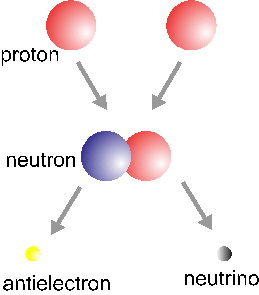
The basic Hydrogen fusion cycle involves four Hydrogen nuclei (protons) and two electrons and yields a Helium nucleus, two neutrinos and six photons. This process occurs in three steps: the first one is
...more

 Here Comes the Sun! A self-guided tutorial about the Sun.
Here Comes the Sun! A self-guided tutorial about the Sun. Live from the Sun A great web site that takes you to the Sun and back!
Live from the Sun A great web site that takes you to the Sun and back! SOHO The SOHO Mission Home Page
SOHO The SOHO Mission Home Page Solar Flare TheoryA NASA/Goddard Space Flight Center site devoted to solar flares
Solar Flare TheoryA NASA/Goddard Space Flight Center site devoted to solar flares Stanford SOLAR Center This site is tons of fun! Includes an online solar telescope, the Sun song and a question and answer section.
Stanford SOLAR Center This site is tons of fun! Includes an online solar telescope, the Sun song and a question and answer section. The Sun: Man's Friend or Foe Learn the good and bad about the Sun.
The Sun: Man's Friend or Foe Learn the good and bad about the Sun. Sun-Earth On-line Resources Content, classroom activities, games, real-time data and more...
Sun-Earth On-line Resources Content, classroom activities, games, real-time data and more...  The Virtual Sun Take a virtual tour of the Sun. Don't forget your sunglasses!
The Virtual Sun Take a virtual tour of the Sun. Don't forget your sunglasses! YOKHOH The YOKHOH mission home page.
YOKHOH The YOKHOH mission home page.













